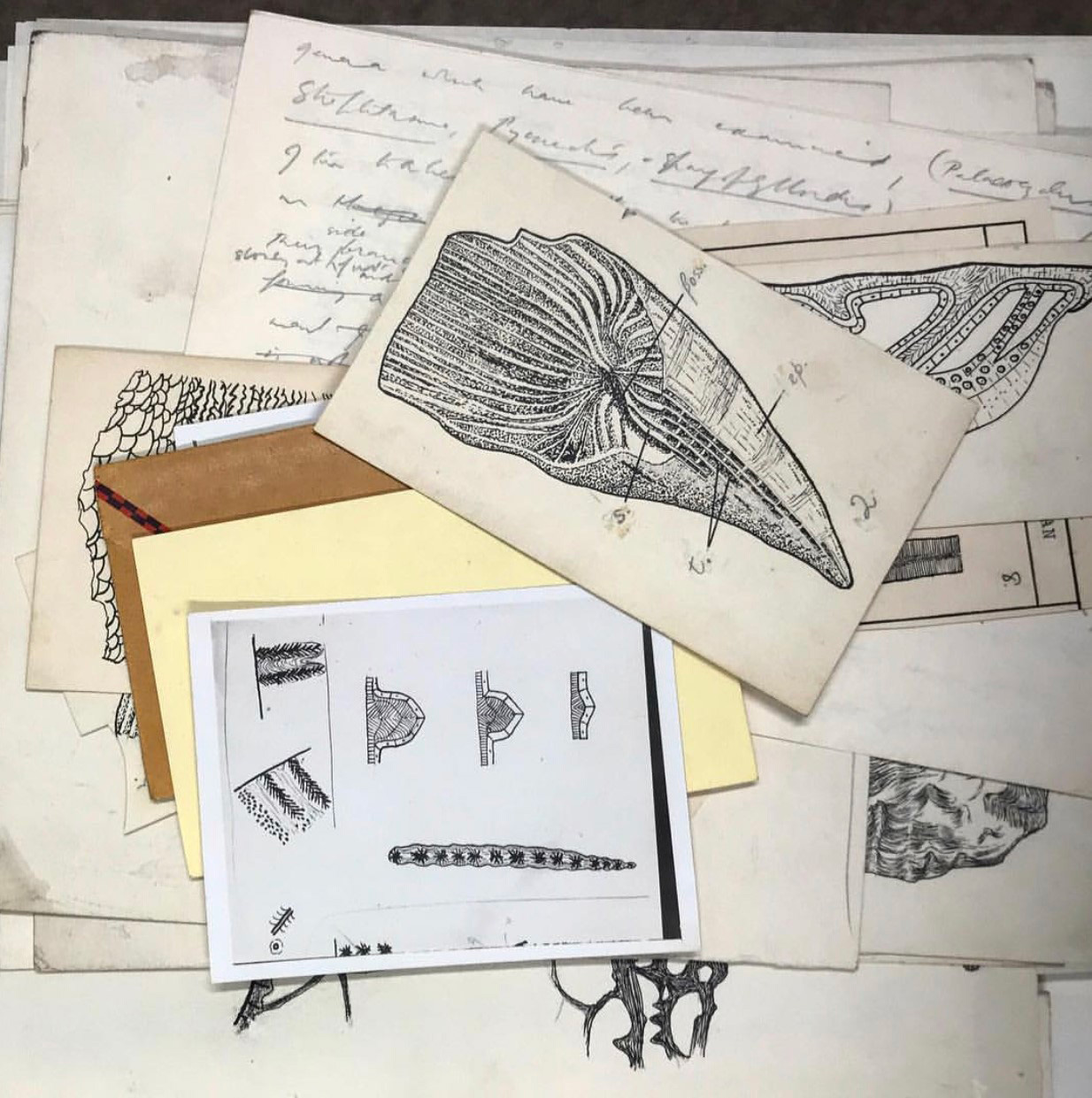With applications for the 2018 UQ Library Creative Writing Fellowship closing on 30 September, Dr Ashley Haywood, the inaugural Creative Writing Fellow (2018) has penned this post about literary influences in the Fryer Library and her experience as the Fellow. Ashley is writing a book of poetry.
Rugosa Coral and Creativity
Rugosa, so called for their wrinkled corallite wall, have been extinct since the end of the Palaeozoic era, around 500 million years ago. Some species formed colonies, but I’ve been interested in the solitary form of Rugosa after spending time in the Fryer Library’s Dorothy Hill Collection.
Solitary Rugosa is horn-shaped and grew upwards to a metre in length from the sea-floor from a single rootlet, or foot. Their horns could easily topple over and are often bent as they have had to readjust to conditions as they grew. They lived in the still lagoons on the back-reef, or on the quieter slopes of the fore-reefs in the benthic zone.
When I think about Rugosa, I think about creativity.

The horn-shaped solitary Rugosa reminds me of katabasis, a descent into an underworld, Inferno. I am also reminded of Delueze and Guattari’s A Thousand Plateaus: Rugosa as rings of strata, an Ecumenon, a machine that assembles meaning, digesting or spitting it back out as something else again.
I’m interested in what goes on ‘beneath’ science and art experimentation, and what happens en route when we bring new ideas out into the open. Molecular biologist, François Jacob in The Statue Within described the underworld of creativity as Night Science where ‘thought proceeds along sinuous paths, tortuous streets, most often blind alleys’, where meaning is carried from one place (in)to another (and yet another) until it is brought out into the open: Day Science, reasoning and deduction.
When I dwell in Rugosa-as-idea, I descend its limestone steps.
Being the Creative Writing Fellow
This year I have had the extraordinary privilege of being able to give time to these ideas and my writing as the inaugural recipient of the UQ Fryer Library Creative Writing Fellowship.
I have been working on a book of poems responding to ecological uncertainty and mass species loss in this Age of Loneliness upon us, drawing inspiration from the Dorothy Hill Collection. Poems inspired by the solitary Rugosa have become poems on their own creation, or poineumena. But, of course, when descending those stone stairs into possibility, I am not solitary or acting entirely alone: every creative act comes out of collaboration—a ‘coral colony’ of ideas, texts, and people met along the way.
I’m looking forward to writing more on collaboration and escaping selfhood, inspired by reef-building corals, when I visit Heron Island Research Station in September.
Please join us to hear Ashley presenting on her fellowship at Geopoetry: dwelling in the art-science nexus with Dorothy Hill on the 30 October.
Change to this fellowship for 2024
The 2024 Creative Writing Fellowship provides an early career Australian author with the opportunity to write a new creative work using the special collections in the Fryer Library.
The fellowship is offered by UQ’s Centre for Critical and Creative Writing in the School of Communication and Arts in conjunction with the Fryer Library and with the support of the Copyright Agency Cultural Fund.
Applications for the 2024 fellowship close at 5pm on Monday 13 November 2023.
The award is supported by the Copyright Agency Cultural Fund.
